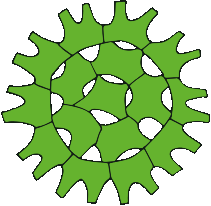In two samples a lot Nephrochlamys-cells. Were they really N. allanthoidea instead of the more common N. subsolitaria (nowadays N. rostrata, according to Nygaard, Komárek, J.Kristiansen & O.M.Skulberg 1986 (which I have not yet had the pleasure of reading – you can throw a copy this way, if you are passing by))?
If all goes well, N. allanthoidea very easy to identify. One can see the short, blunt wing-like extensions on the sides of the mother cell, like here in the original drawing of Korshikov.
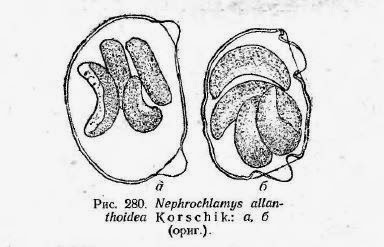
Korshikov 1953
But sometimes it does not have them. I’d say, keep on looking, for other individuals. On the other hand the drawings in both Komárek & Fott 1983 and Hindák 1984 you can see that also N. subsolitaria can have mother cells with extensions. A bit smaller, and different -yes. But this does mean that one should not rush to baptize the thing to allanthoidea only because of some little wings.
What then? You can also take a look at the shape of the cells. According to Hindák (1984, 1988) the cells are less bent than in the other Nephrochlamys-species. Ok, but in my samples the cells were quite bent. Is this allowed? At least the ends of the cells were equal, not one pointed and another sharp, as N. subsolitaria/rostrata has it.
Yet another identifyication point in N. allanthoidea is the number of autospores: according to Komárek & Fott 1983 4-(8), while N. subsolitaria/rostrata has only four. But then again, Hindák (1988) mentions for N. allanthoidea, that “only four autospores were formed”. This does of course not rule out that there could be 8, like Komárek & Fott said.
In my samples I saw mother cells holding more than 4 autospores in it, and that should be characteristic to allanthoidea.
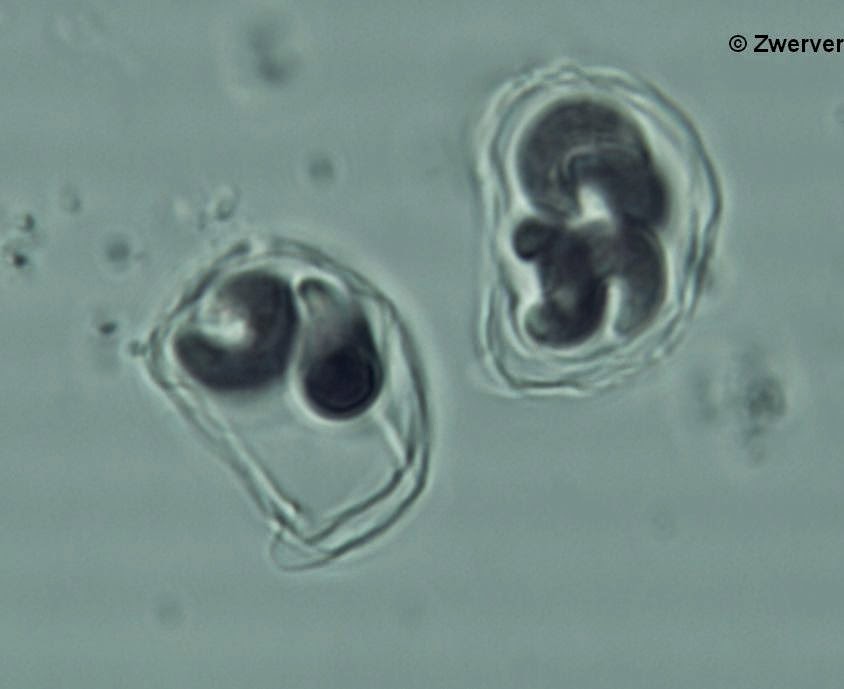
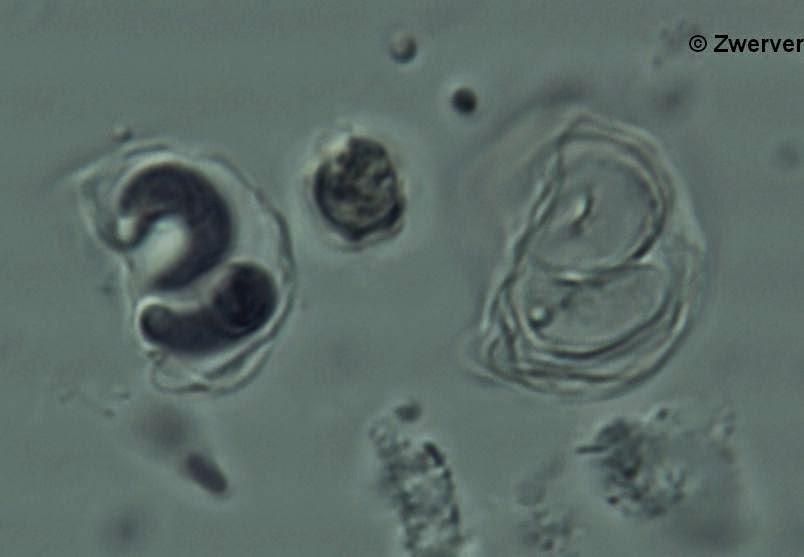
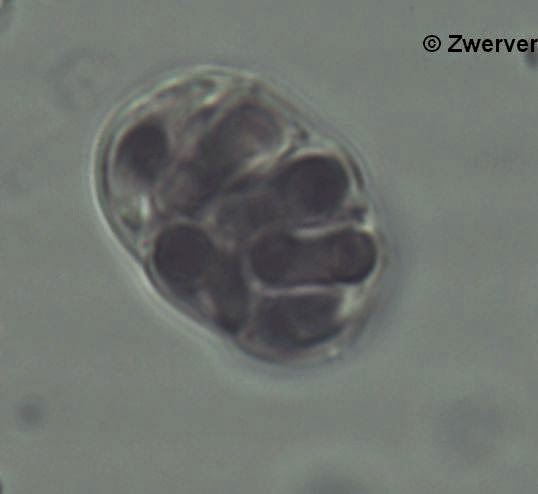
So I would say, that these are N. allanthoidea, in spite of the curved cells. What do you think?
Literature:
Hindák, František 1984. Studies on the chlorococcal algae (Chlorophyceae). III. Biol. Práce., XXX/1, p. 308.
Hindák, František 1988. Studies on the chlorococcal algae (Chlorophyceae). IV. Biol. Práce., XXXIV/1-2, p. 264.
Komárek, J. & Fott, B. (1983): Chlorophyceae (Grünalgen). Ordnung: Chlorococcales. – In: G. Huber-Pestalozzi (†). Das Phytoplankton des Süßwassers. Systematik und Biologie. 7. Teil, 1. Hälfte. In: Elster, H.-J. & Ohle, W. (red.). Die Binnengewässer. Einzeldarstellungen aus der Limnologie und ihren Nachbargebieten. Band XVI. E. Schweizerbart’sche Verlagsbuchhandlung (Nägele u. Obermiller), Stuttgart. X + 1044 pp., incl. 253 pls. ISBN 3-510-40023-2.
Nygaard, G., Komárek, J., Kristiansen, J. & Skulberg, O.M. (1987 ‘1986’). Taxonomic designations of the bioassay alga NIVA-CHL 1 (“Selenastrum capricornum”) and some related strains. Opera Botanica 90: 1-46, 35 figs, 9 tables.
